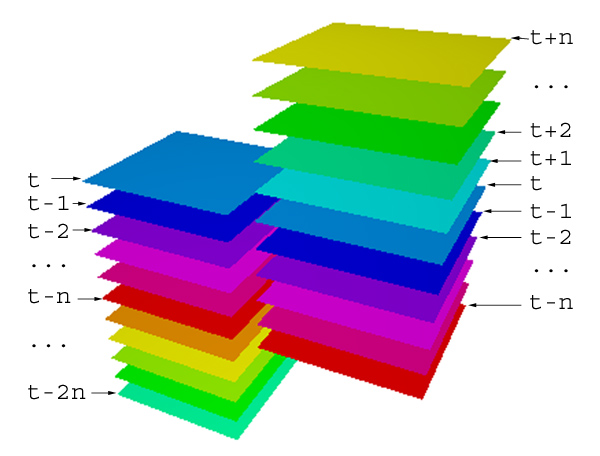|
As was raised by Ke et al.[4]
one of the main implementation issues with the integral space
time is maintaining numerical precision over long sequences. We
have overcome this problem using a double image buffer system
that updates two image buffers simultaneously. While one buffer
is being restarted the other is used to perform the calculations.
A pictorial representation is shown in figure 3, as can be seen
the buffers are offset by half their size, and therefore work
out of step with each other, when the first is half full the other
starts from zero and fills, when the first buffer is full the
window switches into the second buffer which is only half full
and the first buffer is restarted. This way, at any frame there
is always a full window of history yet the total value of any
point is limited since there is a maximum of two full windows
calculated.
|
 |
| figure 3 - The dual image buffers. |
|
